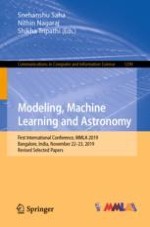2020 | OriginalPaper | Chapter
The System of Open Star Clusters Revisited
Authors : Priya Hasan, S. N. Hasan
Published in: Modeling, Machine Learning and Astronomy
Publisher: Springer Singapore
Activate our intelligent search to find suitable subject content or patents.
Select sections of text to find matching patents with Artificial Intelligence. powered by
Select sections of text to find additional relevant content using AI-assisted search. powered by
